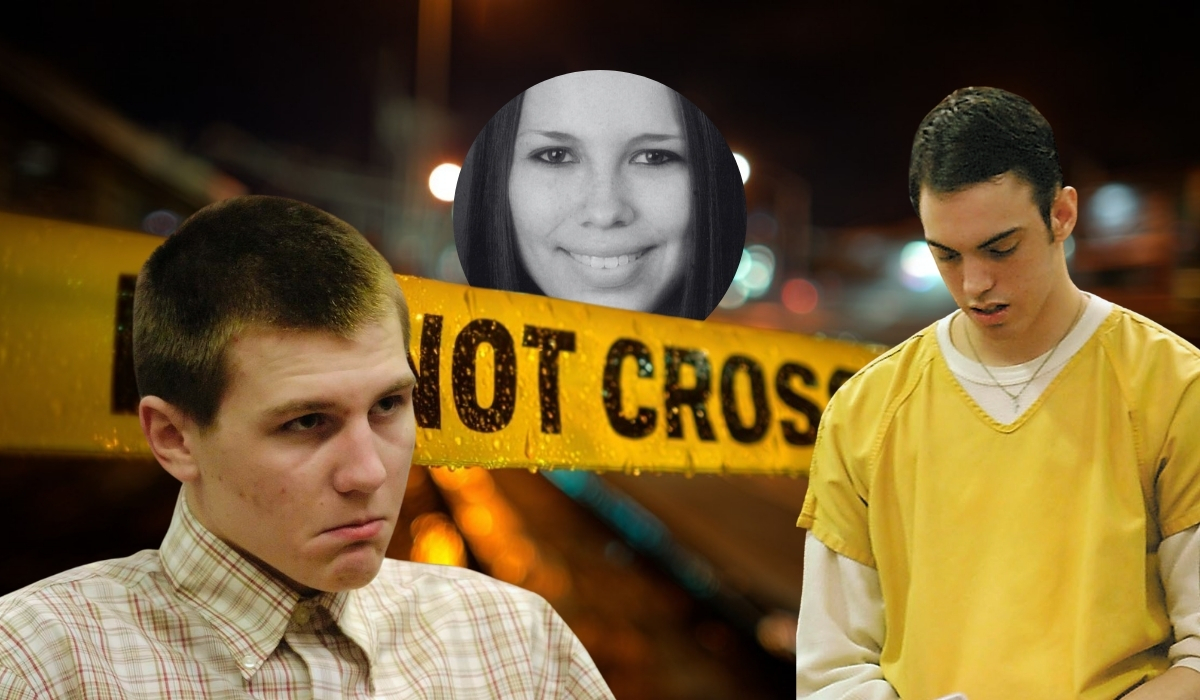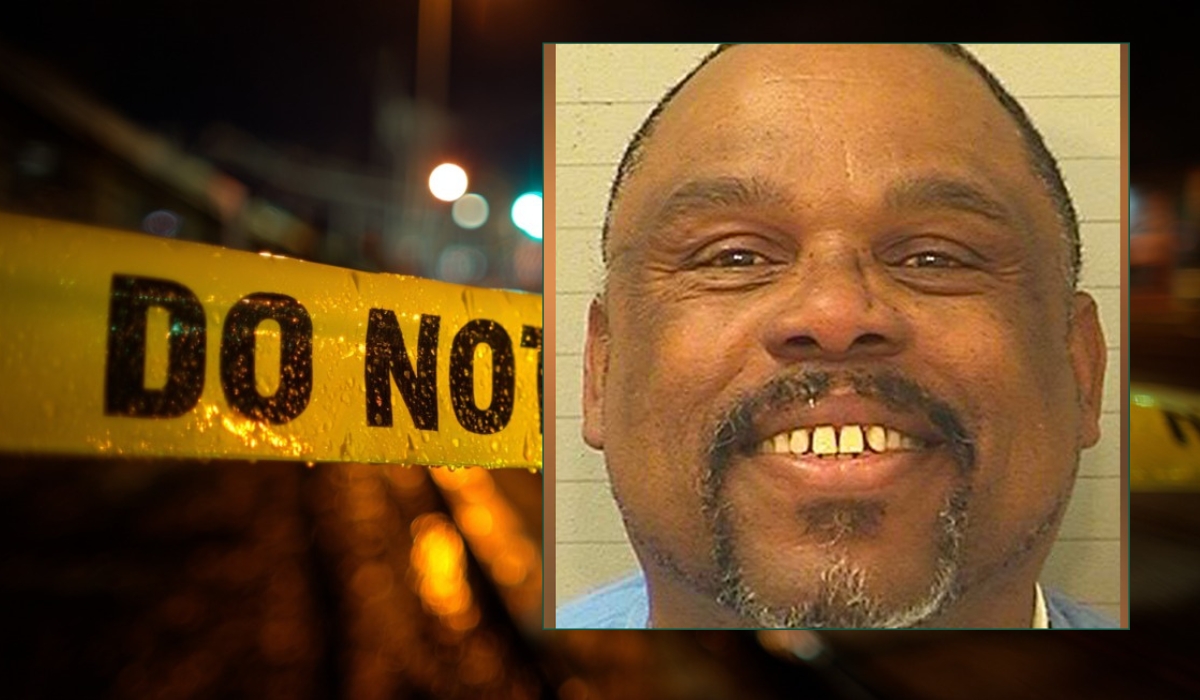Wrongful convictions remain among the most gripping and tragic stories covered by Dateline NBC. Each case shows how quickly suspicion, flawed evidence, and rushed judgments can destroy lives while real justice lingers in the shadows.
Through examination of these episodes, one can see both the failures and the rare triumphs of a justice system under constant pressure.
These stories go beyond entertainment, reminding viewers of the human cost behind investigative missteps and the resilience of those who fight to reclaim their freedom.
1. “The Wrong Man” – Ryan Ferguson Case

Ryan W. Ferguson spent nearly ten years behind bars for a 2001 murder he never committed. conviction hinged entirely on a mistaken confession and inaccurate eyewitness accounts, without a shred of physical evidence tying him to the scene.
Years of appeals and legal persistence eventually brought to light major flaws in the prosecution’s case, witnesses recanted, alleging coercion, and evidence suppression emerged.
The courts vacated his conviction in November 2013, setting him free days later after nearly a decade incarcerated. Subsequent civil lawsuit against Boone County, the city of Columbia, and individual prosecutors resulted in an $11 million settlement in 2017, $1 million for each year of wrongful imprisonment plus legal fees.
Still, justice didn’t end there: a 2024 lawsuit against an insurance carrier resulted in a $38 million award, and in mid-2025, an additional court judgment raised his total compensation to approximately $43.8 million, including interest.
Despite life’s disruption, Ferguson now lives in New York, works in real estate, and has appeared on TV shows such as The Amazing Race and MTV’s Unlocking the Truth. His story has been featured extensively in documentaries and shows like Dateline and inspired the Netflix film Dream/Killer.
@officialfeazy Convicted with No Evidence Ryan Ferguson spent a decade behind bars for a murder he didn’t commit — now he’s using his freedom to fight for justice. #RyanFerguson #WrongfulConviction #Innocent #JusticeForAll #TrueCrime #InnocenceProject #LegalInjustice #FreeAtLast #Exonerated #fyp #viralvideos #viralvideo ♬ Rise to the Top – PraskMusic
- Coerced or false testimonies, including from a classmate who “dreamed” Ferguson was guilty
- Absence of any physical evidence, despite extensive crime-scene collection
- A successful legal battle led by Kathleen Zellner exposed prosecutorial misconduct and recanted testimony
- Multimillion-dollar compensation: $11 million settlement (2017), $38 million from insurance (2024), $43.8 million total judgment (2025)
- Public advocacy, media attention, television appearances, and a dream/killer documentary raising awareness
2. “The Man Who Knew Too Much” – Raymond Jennings Case

Security guard Raymond Lee Jennings discovered 18-year-old Michelle O’Keefe after she was shot to death inside her blue Mustang at a Palmdale, California, park-and-ride late in February 2000.
No physical evidence, no DNA, no weapon, no traces connected him to the crime. investigators became suspicious of his knowledge, however, because he appeared to know too many intimate details of the scene, even though such specifics weren’t publicly available.
He was tried three times: the first two trials ended in hung juries, while a third one in 2009 resulted in a conviction and a sentence of 40 years to life. Despite a lack of forensic evidence, he was incarcerated for 11 years.
In 2015, law student Clinton Ehrlich watched “The Girl in the Blue Mustang” episode on Dateline. Recognizing critical flaws, he and his father, attorney Jeffrey Ehrlich, persuaded the DA’s office to reopen the case. A new review confirmed exculpatory evidence had been overlooked and a mistrial of justice had occurred.
In June 2016, prosecutors moved to release Jennings, and by January 2017, a judge declared him factually innocent and dismissed all charges. Jennings returned to his family in North Carolina, choosing a quiet life away from the spotlight.
- No forensic or physical evidence tying him to the crime
- Knowledge of crime scene details is viewed as suspicious
- Three trials: first two ended in mistrial; third led to conviction (40 years to life)
- Dateline coverage prompted reexamination by Ehrlichs
- conviction vacated; factual innocence declared in 2017
- aftermath: returned home, strong family support, now living privately
3. “Conduct Unbecoming” – Early Misidentification in David Russell Williams Case

Renowned Colonel David Russell Williams served as a high-ranking officer in the Canadian Forces and was commander at CFB Trenton until his arrest in February 2010.
His crimes began as a series of fetishistic burglaries, stealing women’s underwear from their homes, with no early suspect in sight. Investigators initially failed to connect the unusual thefts to a law enforcement or military leader, allowing the real perpetrator to continue escalating.
Eventually, forensic evidence like matching tire tread patterns near Jessica Lloyd’s disappearance site and a confession led to Williams’s arrest. He confessed to two murders, multiple sexual assaults, burglary counts, and detailed records indicating a methodical escalation from fetish burglary to murder.
He received concurrent sentences: life imprisonment for the two murders, two 10-year terms for sexual assaults and forcible confinement, and 82 one-year terms for break-and-enter charges.
Convicted in late 2010, his status and military accolades, including command over VIP flights, sharply contrasted with the brutality he had been hiding.
His deception shocked Canadians and spotlighted how early misdirection and societal trust can shield a violent offender.
@officialfeazy Colonel of Darkness: The Double Life of Russell Williams A decorated Canadian Air Force commander by day, Russell Williams hid a chilling secret life as a serial predator and killer, shocking an entire nation when his true identity was exposed. #RussellWilliams #TrueCrime #DoubleLife #MilitaryCrimes #SerialKiller #CanadianCrime #DarkSecrets #Justice #TrueCrimeStory #CriminalMastermind ♬ Emotional Cinematic Sad Violin and Piano – ISAo
- Experienced military leader whose esteemed status delayed suspicion toward him
- Early crimes involved fetishistic underwear thefts from dozens of homes, without prompt investigation into those acts
- The eventual break came via forensic links: tire tread matching to the disappearance scene, and a confession full of hidden trophies and photographic evidence
- Sentencing in October 2010 included concurrent life sentences for murder and decades for other crimes
4. “The Secret in Black Rock Canyon” – Misplaced Suspicion in Cassie Jo Stoddart Case

Cassie Jo Stoddart, a 16-year-old high-school junior, was staying with relatives when she was brutally murdered in September 2006.
Multiple individuals, including her boyfriend and her mother’s partner, initially fell under suspicion based on tenuous links like presence at the scene or perceived closeness.
Only later did investigators discover that the true killers were her own classmates, Brian Draper and Torey Adamcik. Both were convicted in 2007 of first-degree murder and conspiracy, and were sentenced to life without parole based on a disturbing, premeditated “Scream-inspired” attack.
Dateline, April 2025 episode, went into the horror of the case, the video confession found by police in Black Rock Canyon, and how misplaced suspicion on those close to Cassie nearly derailed justice.
Brother Andrew later opened up about personal trauma, and the fact that his mother, Anna, passed away in 2022 only deepens the tragedy of misdirected suspicion and tragic loss.
@analog.archivessIn September 2006, 16-year-old Cassie Jo Stoddart was housesitting for her aunt and uncle in Pocatello, Idaho. She was a kind and responsible student who had agreed to watch over the house for the weekend, including feeding their pets and keeping things in order. That Friday night, her boyfriend, Matt, came over to keep her company. Later, two of her classmates Brian Draper and Torey Adamcik stopped by as well but eventually left. Not long after, Cassie and Matt began hearing strange noises in the house The power flickered, and things felt off. Matt Eventually left even offering Cassie to go with him , however she declined , wanting to be responsible and making sure the animals were cared for. But what she didn’t know was that Brian and Torey had returned and the backdoor was left unlocked . Inspired by horror movies , they were hiding in the basement, filming themselves and planning what they called their “real-life horror story.” Wearing masks and carrying knives, they waited until she was alone. Later that night, Cassie was attacked and murdered in the place she thought was safe. What made it all the more disturbing was that her killers tried to turn it into a twisted production documenting everything like it was part of a script. After the crime was committed Brian and Torey were soon brought in for questioning, and their stories began to unravel. Investigators discovered the chilling videotapes they had made recordings of them discussing the plan at school, driving to Cassie’s house, and reflecting on what they had done after the fact. Their own words and footage became undeniable evidence. Both were arrested, charged, and later sentenced to life in prison without the possibility of parole. Cassie Jo Stoddart was a bright, caring young woman with a future ahead of her. Her life was taken far too soon , May her memory always be honored. 🕊️♬ som original – 𝗞𝗜𝗡𝗚𝘅 – 势不👑
- Wrongful suspicion of boyfriend/mother’s partner
- Classmates as actual perpetrators
- Video confession in a remote location
- Ongoing emotional toll on family.
- Life sentences in 2007
5. “Dead Man Talking” – Nicholas Alahverdian Deception Case

Convicted sex offender Nicholas Alahverdian, also known as Nicholas Rossi, Arthur Knight, and several other aliases, staged his own death in 2020 in an elaborate attempt to escape legal consequences.
Fake reports claimed he died of non-Hodgkin lymphoma, but lingering doubts led authorities to investigate further.
Fingerprints, tattoos, and medical records ultimately revealed he was alive and living in Scotland under an assumed identity.
Extradited to the U.S. in January 2024, he later admitted in court that he faked his death and invented fake identities. In August 2025, a Salt Lake County jury found him guilty of a 2008 rape.
He now faces sentencing and future trials.
The episode “Dead Man Talking” revisited this astonishing saga. It highlights how deception can derail justice, leaving victims unheard and perpetrators free, until the lie unravels.
- Faked death by claiming terminal illness, prompting a mock obituary in 2020
- Identification via fingerprints and tattoos, despite the alias ‘Arthur Knight,’ led to an arrest in Scotland in 2021
- Extradition from Scotland to Utah was finalized in January 2024 after a judicial ruling
- Admission in October 2024 to faking his death and identity during the bail hearing
- Conviction August 2025 for 2008 rape; sentencing pending, with another trial set for September 2025
6. “The Night Before Halloween” – William Charles Marshall (Delayed Justice)

Assistant manager Robin Lucille Hoynes was fatally attacked in the KFC backroom on Halloween morning, October 30, 1984.
A piece of curved foam found near her body looked insignificant to investigators at first, yet decades later became key evidence. Cold case reopened in 2002 or 2004 thanks to renewed efforts, and a month later, a re-interviewed ex-girlfriend recanted her previous alibi and shared details only the killer would know.
In 2006, a grand jury indicted William Charles Marshall, and his conviction came in 2007.
The jury relied heavily on a forensic link: the foam matched foam padding in Marshall’s shoes, a rare piece of physical evidence connecting him to the crime scene.
Life sentence without possibility of parole brought long-awaited closure to Hoynes’s grieving family, who had spent years forgoing Halloween celebrations in her absence.
A flash of forensic discovery nearly 23 years after her death sent shockwaves through the community, proving that even small overlooked clues can topple decades of unanswered questions.
- The cold case lay dormant for over two decades until reopened in the early 2000s
- Unusual foam found at the crime scene matched the padding inside Marshall’s boots, breaking the case
- Ex-girlfriend’s recanted alibi revealed incriminating knowledge only the suspect could know
- Trial concluded with a guilty verdict and a life sentence in 2007
- Family finally able to reclaim Halloween: first trick-or-treating since 1984 marked a symbolic emotional resolution
7. “Haunting” – Anthony Garcia Case

Anthony Joseph Garcia, a former pathologist, carried out two separate double murders in Omaha, Nebraska, one in 2008 and another in 2013, targeting people connected to his former medical training program.
Initial investigation into the first murders went cold as no viable suspects emerged. Only after further violent years later did a pattern surface, linking Garcia to multiple crimes.
Prosecutors established a revenge motive: Garcia harbored a longstanding resentment over being dismissed from Creighton University’s residency program in 2001.
Traced through digital and material evidence—credit card activity, a car matching surveillance, and DNA comparisons—he was arrested in July 2013. A grand jury later charged him.
In October 2016, his trial began, followed by a conviction on all counts, including four first-degree murders. The judiciary panel cited “especially depraved” motivation and premeditation when handing him the death penalty in September 2018.
Subsequent appeals, including a 2023 motion for a new trial and competency claims, failed; in September 2023, Nebraska’s Supreme Court upheld the convictions and sentences.
View this post on Instagram
- Two double murders in 2008 and 2013 were linked to a revenge motive after termination from residency
- The case lay cold until the second set of murders triggered a linkage and investigation
- Arrest and charges stemmed from forensic evidence—DNA match, credit card use at crime location, vehicle surveillance
- 2016 conviction on all counts, including first-degree murder
- A death sentence was handed down in September 2018 by a three-judge panel, described as justified due to aggravated circumstances
8. “At the Bottom of the Stairs” – Cara Rintala
Annamarie Cochrane Rintala, a dedicated paramedic, was found strangled at the bottom of her basement stairs in Granby, Massachusetts, on March 29, 2010. Paint light-colored and still fresh coated her body and the surrounding area.
Cara Rintala, also a paramedic and Annamarie’s wife, was discovered at the scene, cradling her body and calling for help. Many believed she was grieving, but investigators soon questioned her role in the tragedy.
A significant relationship turmoil preceded the incident. domestic heated arguments, a 2008 assault arrest (later dropped), mutual restraining orders in 2009, and financial tensions all painted a complex backdrop.
@lawandcrime Opening statements for the strangled wife murder trial are expected to begin any day now. #CaraRintala is accused of killing her wife, #AnnamarieRintala, inside their Massachusetts home in 2010. Cara claims she found Annamarie dead, covered in paint, in their basement. Watch the entire trial live on the Law&Crime Network YouTube page. #law #lawandcrime #crime ♬ original sound – lawandcrime
Cara faced four trials:
- The first two (2013 and 2014) ended in hung juries.
- The third trial (2016) resulted in a conviction for first-degree murder and a life sentence.
- Forensic evidence spotlighted expert testimony about paint drying time, but that was later deemed unreliable.
- In 2021, Massachusetts’ highest court overturned that conviction, citing the questionable expert testimony.
- The fourth trial took place in September 2023. The jury returned a verdict of voluntary manslaughter, a lesser charge.
- Sentencing followed: 12–14 years in prison, with credit for the 7.5 years she had already served.
Judge Francis Flannery acknowledged the brutality of Annamarie’s death. He explained that savagery, deliberate staging of the scene, and Cara’s decisions to mislead investigators, such as staging errands and disposing of evidence, demanded accountability.
- Chaotic crime scene: victim covered in fresh paint, discovered by Cara cradling her (Annamarie)
- History of relationship conflict, including prior arrests and restraining orders
- Four trials: two ended in mistrials; the third conviction was overturned due to faulty expert testimony; the fourth ended with a voluntary manslaughter conviction
- Legal outcome: 12–14-year sentence, with credit for 7.5 years already served
- Current status: incarcerated, still serving the remainder of the sentence
9. “The Pink Skirt Plot” – Adam Joel Anhang Case

Adam Joel Anhang, a Canadian-born real estate developer and Wharton graduate, founded a nightclub-restaurant called Pink Skirt in Puerto Rico.
His wealth and sudden marriage to former beauty pageant winner Áurea Vázquez-Rijos sparked suspicions when he was brutally murdered in 2005.
At first, authorities arrested Jonathan Román-Rivera, a dishwasher at Pink Skirt, and convicted him of the crime with a 105-year sentence. no physical proof connected to him to the scene; he simply matched witness descriptions.
Later, an FBI probe exonerated Román-Rivera, leading to his release and a wrongful-conviction lawsuit for $12 million against officials.
Federal investigators discovered that Áurea Vázquez-Rijos had orchestrated the murder-for-hire, offering hitman Alex Pabón-Colón three million dollars. She arranged a dinner at that restaurant to lure Adam into a trap.
Pabón stabbed him multiple times and struck him with a cobblestone while Vázquez-Rijos excessively mimicked being injured to stage a botched
She fled to Italy afterward. Investigators found evidence of her using multiple identities and forging documents, including claiming Jewish lineage, to delay extradition.
FBI and Spanish police lured her to Madrid with a fake tour job; upon arrival in 2013, she was arrested and then extradited to Puerto Rico in 2015.
Aurea, her sister Marcia, and Marcia’s ex-boyfriend José Ferrer-Sosa stood trial in 2018. prosecutors presented evidence that Aurea made around ten calls to Adam to encourage him to attend the dinner, while Pabón-Colón confessed and recounted her instructions.
The jury found all three guilty of conspiracy and murder-for-hire.
- Wrongful conviction of a dishwasher
- FBI exoneration of him
- Wife-led murder-for-hire plot
- Elaborate identity deception across Europe
- Life sentences in 2019
10. “The David Camm Case” – Wrongfully Convicted State Trooper

1994-born David Ray Camm, a former Indiana State Trooper, returned home on the night of September 28, 2000, to discover his wife, Kimberly, and their two children, Jill (5) and Brad (7), had been shot to death in their garage.
He consistently maintained his innocence, backed by an alibi that placed him playing basketball at a church, corroborated by at least 11 witnesses. Investigators, however, focused on him, citing blood spatter on his shirt and a 911 call they deemed suspicious.
Those signs fueled a conviction in his first trial (2002), despite a notable absence of physical evidence linking him to the crime.
The appeal overturned that first verdict in 2004, based on prejudicial evidence, particularly testimony about Camm’s extramarital affairs that skewed the jury’s opinion.
Second trial (2006) again ended in conviction, built around new allegations including a molestation claim and jailhouse informant testimony. That verdict was later reversed in 2009 by Indiana’s Supreme Court, which found the molestation allegation lacked credible evidence.
A third trial in 2013 shifted focus onto a new suspect—Charles Boney—whose DNA was found on a sweatshirt at the crime scene, and whose palm print appeared inside the Camm vehicle. With that new DNA evidence and expert testimony undermining earlier forensic claims, Camm was acquitted.
Boney was later convicted of the murders and sentenced to 225 years in prison.
@nightmare.narratives.1 David camm case #truecrime #crime #scary #horror #crimestories #viral #foryou #fyp #davidcamm ♬ original sound – Nightmare Narratives
- Reliance on flawed blood-spatter analysis and personal attacks during trials
- Absence of physical evidence directly implicating Camm
- DNA and fingerprint evidence connected the true perpetrator (Boney) to the crime scene
- Three trials over 13 years: two wrongful convictions overturned, one final acquittal
- Multimillion-dollar settlements: $450 K (county), $4.6 M (state), plus $3 M from Boney judgments
Final Thoughts
Episodes that focus on wrongful convictions serve as cautionary tales about the dangers of unreliable witnesses, pressured investigations, and overlooked evidence.
Dateline coverage has not only documented these injustices but also, in some cases, contributed to exposing them.
Stories of exoneration are there to remind society of the importance of careful, unbiased investigations and the relentless pursuit of real justice.
Read more: How much do Hollywood directors actually make? Find out the number behind their salary that no one has told you before!


